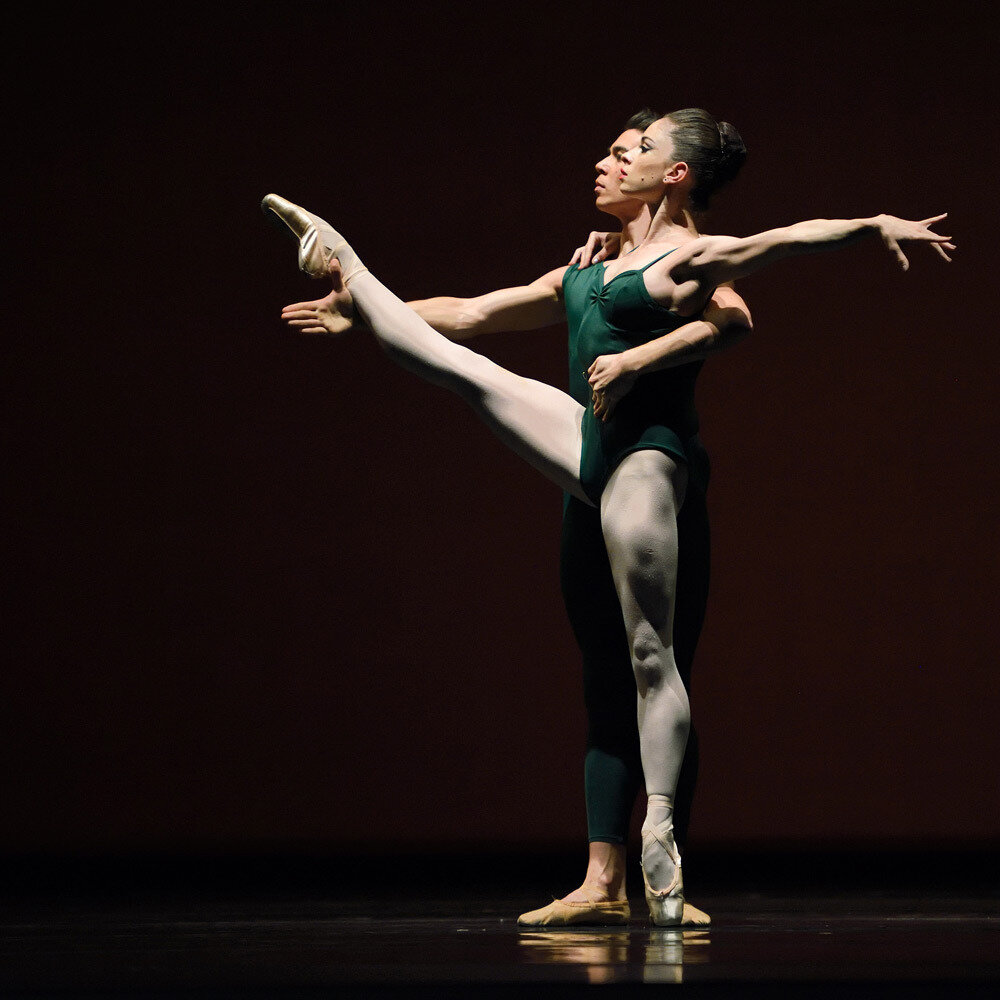
Continuum
Continuum
Christopher Wheeldon’s Continuum© is a work of many moods and tones—a dance visualization of music by late-20th-century avant-garde composer György Ligeti. It’s also, according to Ballet Master Anita Paciotti, who assisted the choreographer during the ballet’s creation, “very much his response to the four couples he worked with. It was custom-built for them.”
Created for San Francisco Ballet in 2002 and last performed by the Company in 2006, Continuum© is the second of three neoclassical ballets Wheeldon set to Ligeti’s keyboard music. The other two, Polyphonia and Morphoses, choreographed for New York City Ballet in 2001 and 2002, respectively, share Continuum©’s spare look and emphasis on the couple. The rhythmically complex, often dissonant Ligeti piano scores don’t strike the ear as inherently danceable, but Wheeldon chose them for this triad of dances in a deliberate move away from Romantic-era music. “Audiences shouldn’t just be entertained,” he says. “They should be challenged. And I believe the only way you can push an audience is by pushing yourself.”
The ballet has lighthearted moments, particularly in two quartets, but “there’s an oppressive quality to the piece that I think is purposeful,” says Paciotti. When Wheeldon made Continuum© it was not long after 9/11. Though the tragic event wasn’t the primary influence on what Wheeldon did in the studio, it did have an effect on him. “We all talked about 9/11; it was on everybody’s mind,” Paciotti says. “I don’t think overall you get the idea that this is a very somber piece, but it has serious moments and it closes on a serious moment.”
There are only two direct references to 9/11, both of them in the central pas de deux. “When the two hands meet and they make the world, that’s basically the two airplanes,” says Principal Dancer Sofiane Sylve. Paciotti says the message in those cupped hands, though Wheeldon didn’t say it explicitly, is that the world is fragile. At one point where a red horizontal line is on the backdrop, Sylve replicates it, sweeping her arms along an unseen horizon. “Basically those two lines are matching,” she says. “It’s all about the world. You’re looking toward the future.”
Wheeldon might have been thinking about the future, but he was also responding to the immediate world, in the form of his eight dancers and a piano score he pronounced, when he was a 13-year-old piano student, “the ugliest thing” he’d ever heard. But perspectives change, and in his 30s Wheeldon saw the music’s intricacies and surprises as worthy of exploration. All of the music is difficult, but the final piece, “L’escalier du diable” (“The Devil’s Staircase”), says Paciotti, “is crazy. For the pianist too. You can’t really count it. Paciotti says she and Wheeldon invented a formula for counting the piece, “just to make some sense out of it. And then there were other places where you could make no sense out of it. It takes a long time, but when you get intuitive, experienced, smart, musical dancers who are very in tune with one another, it goes together very well.”
As for his dancers, Wheeldon gives them much to work with. He makes liberal use of the floor—crawling, kneeling, rolling—and when the dancers are on their feet they move through intricate partnering, effervescent solos, whispers of folk dance, elegance, athleticism, and sensuality. Wheeldon and his lighting designer, Natasha Katz, set off the dancers in dramatic ways, isolating them in tight pools of down light or, when they take flight, splashing daylight across the stage. The result is sculptural, minimalist, and evocative. “There’s no special effects; there’s no big set,” says Sylve. Yet “there’s another dimension created.”
by Cheryl A. Ossola



Creative Team
Choreographer
Christopher Wheeldon
Composer
György Ligeti
Lighting Design
Natasha Katz
World Premiere: April 4, 2002 - San Francisco Ballet, War Memorial Opera House; San Francisco, California